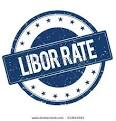The recent news that the worldwide LIBOR interest rate will be replaced after years of scandals about it being rigged by some of the world’s largest banks has started a slow-motion earthquake that will rattle interest rate lending worldwide.
It will also be one of the most expensive fixes ever applied to the $350 trillion in derivatives, bonds, loans, and other financial products benchmarked to the LIBOR index since it began in 1986. 
The scope of this astounding price-fixing scam—$300 trillion worth of securities are pegged to the LIBOR interest rate and affect billions of borrowers—should translate into a no-faith vote in the world’s largest banks, including Barclays, Bank of America, BNP Paribas, Citigroup, Goldman Sachs, HSBC, Royal Bank of Scotland, and UBS. In May 2015, five institutions, including JPMorgan Chase and Citigroup, were fined roughly $5.7 billion combined, and four pleaded guilty to U.S. criminal charges over currency market misconduct. A fifth bank, UBS, pleaded guilty to rigging benchmark interest rates, the U.S. Justice Department said, and more trials of traders are still pending.
And while this price-fixing scandal continues to unfold, the U.S. financial services industry, including investment firms, banks, and fund and insurance companies, incessantly complains about the high cost of complying with government regulations and their anti-competitive impacts on selling financial services. However, these companies fail to mention the billions in costs that will be spent to replace the LIBOR benchmark over the next few years. These costs will dwarf any expense ever traced back to pro-investor reforms originating from federal or state regulators.
In short, the financial services industry will now have to shoulder billions in accounting, borrower communications, servicing, re-pricing, technology, and security changes just to accommodate the switch from LIBOR to a new and yet unnamed benchmark that will cover loans on everything from cars and homes to personal, construction and corporate loans.
(Since a replacement index has not been named, there are no reliable figures on how much it will cost to replace and recalculate the trillions in loans benchmarked to LIBOR.)
It is also worth noting that the LIBOR bid-rigging scandal happened in an unregulated financial environment in London. The idea that the world’s largest banks would engage in illegal behavior was out of the question until they got caught.
The Unprecedented Scope of the Problem
As noted in numerous previous columns on this site, the cost of this vast re-benchmarking program, probably the largest ever done in the financial services industry, is due to mismanaged and corrupt business practices inside the world’s largest banks that managed the daily benchmarking in the first place.
To understand this problem, LIBOR offers daily average interest rates for five currencies (the U.S. dollar, euro, British pound, Japanese yen, and Swiss franc) and seven lending periods (ranging from overnight to 12 months). In total, there are 35 different daily LIBOR rates. LIBOR is governed by the International Exchange (ICE) Benchmark Administration. According to Investopedia, the ICE calculates the LIBOR rates daily by surveying participating banks.
This scandal was also committed in an unregulated market, which exists alongside the regulated financial marketplace, which has seen an ever-increasing number of large front-running and insider trading scandals. The similarities have to be noticed. While many will deny it, front-running and insider trading drive the most profitable banks and trading firms over time.
As an earlier Bloomberg article noted, the LIBOR price-rigging “has been going on for at least a decade and involved trillions of dollars in loans, including mortgage loans made to unsuspecting U.S. home buyers, tied to the rigged LIBOR rates.
“Employees have been front-running client orders and rigging WM/Reuters rates by pushing through trades before and during the 60-second windows when the benchmarks are set, said the current and former traders, who requested anonymity because the practice is controversial. Dealers colluded with counterparts to boost chances of moving the rates, said two of the people, who worked in the industry for more than 20 years.”
Who Pays for Corruption?
Like any significant shift in the financial markets, winners and losers exist. The losers will be shareholders who must pay for their financial firms to shoulder the vast expenses. However, there will also be winners in the form of traders and some large banks who will make money on the interest rate spreads and fees associated with the massive task of re-configuring a global benchmark that affects billions of loans.
In the words of Bloomberg columnist Matt Levine, “The irony is too obvious: The banks created Libor, they manipulated it, and they paid billions of dollars of fines for that manipulation. The manipulation effectively destroyed Libor. Now, all sorts of Libor trades will have to be replaced, and the banks will have just a grand old time doing that replacement.”
Levine said the banks will be able to victimize their own clients since they can effectively trade against them during the rate reconfiguration process. This is because they will be more expert in the intricacies of the new benchmark than their clients.
This age-old asymmetrical information advantage works well for fund companies and banks that sell mutual funds to unsuspecting investors for their retirement accounts, and now this same asymmetrical advantage will work against more sophisticated institutional clients who don’t have any idea about the details of the new LIBOR-replacement benchmark.
This LIBOR event should renew the debate about the fiduciary standard, which is essentially about taking advantage of unsophisticated clients because one side knows more about the product than another.
The main difference with the LIBOR-re-adjustment process is that some of the unsophisticated clients will be pension funds and institutional investors, who will be charged millions in fees, plus the money they pay for sophisticated consultants and advisors, who will also be fooled.
It’s bad karma to let the fiduciary standard fail for the unsophisticated individual investors only to have it return to take advantage of sophisticated institutional investors. Or maybe that is the market’s version of justice.












[…] to rigging benchmark interest rates, the U.S. Justice Department said. All this was part of the breathtaking scandal to fix the LIBOR international benchmark index. The crime […]